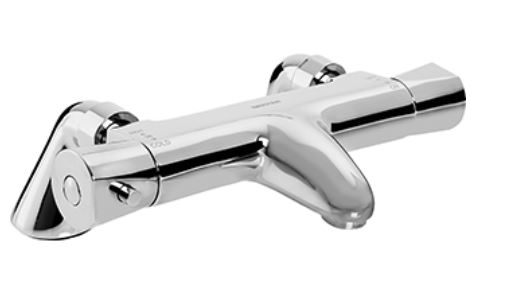
GUEST ARTICLE: Focus on thermostatic for Part G Compliance
When specifying for domestic environments, there are a number of regulations which must be considered. In terms of water delivery in particular, safeguards against scalding are specifically referenced in Approved Document G, and it is important to guarantee every relevant product meets these stipulations. Chris Tranter, product manager at Bristan, explains…
“Whether it is a domestic, public or commercial environment, the key challenge of water delivery remains the same. This is the simultaneous prevention of water-borne bacteria, such as legionella, and management of scalding risk.
The primary method of eliminating bacteria is to maintain a high-water temperature of 60ºC or above, which inhibits its growth. However, when water temperatures are as high as 60°C, scalding becomes a very real concern.
In domestic settings, scalding is one of the greatest hazards to residents, especially children, the elderly and the otherwise vulnerable.
There is an estimated 250,000 minor burn and scald incidents reported to GPs annually, and shockingly, almost 600 people a year are seriously injured from scalds caused by hot water.
Within this, an average of 13 children a day under the age of four suffer a severe injury from a burn or a scald.
One of the most prolific sources for these incidents is the bath. Each year in the UK around 2,000 children attend A&E following bath water scalds, many of which require specialist or intensive care.
It was in response to figures such as these, and campaigns from groups such as The Royal Society for the Prevention of Accidents (RoSPA), that an amendment was made to The Building Regulations 2000, Approved Document G – Sanitation, hot water safety and water efficiency in 2010.

This mandated that all new build homes would have devices fitted to baths to limit the temperature of the water to 48°C – more than hot enough for domestic use, but without the potential for the most serious scald injuries to happen.
This brought English regulations in line with Scotland, where TMVs had become a requirement for new build homes three years prior.
The document went on to note that this would likely be complied with by the fitting of a Thermostatic Mixing Valve (TMV). Already common in showers and in bath fillers specified for sensitive environments such as hospitals and care homes, this amendment was designed to tackle scalding in domestic settings.
TMVs allow water to be stored and distributed at a high enough temperature to kill harmful bacteria, but crucially, reduce it to a safe temperature at the point of use by mixing it with the cold supply. TMVs are also able to maintain the desired water temperature, even if the incoming water pressure or flow rates change, further guarding against the risk of scalding.
Whilst there are viable alternatives to TMVs, for example, temperature limiting cartridges, it is important to note that TMVs are the only solution specifically recognised by Approved Document G, and therefore are the best route to compliance.
When it comes to domestic compliance, it is vital to choose a provider which is able to offer a full suite of thermostatic products – including the bath filler – in order to remain compliant.
Latest news

26th July 2024
Enfield Speciality Doors completes world-class project for Atlas Copco HQ
A rundown office and warehouse building completely transformed into a modern headquarters for Atlas Copco has been fitted with more than 120 internal fire doors from Enfield Speciality Doors.
Posted in Access Control & Door Entry Systems, Articles, Building Industry News, Building Products & Structures, Building Systems, Case Studies, Doors, Interior Design & Construction, Interiors, Posts, Restoration & Refurbishment, Retrofit & Renovation, Security and Fire Protection, Sustainability & Energy Efficiency, Timber Buildings and Timber Products, Wooden products
26th July 2024
Abloy UK launches new white paper
Abloy UK, a leading provider of security and access control solutions, has launched a new white paper.
Posted in Access Control & Door Entry Systems, Architectural Ironmongery, Articles, Building Industry News, Building Products & Structures, Building Services, Doors, Facility Management & Building Services, Health & Safety, Information Technology, Innovations & New Products, Publications, Research & Materials Testing, Security and Fire Protection
26th July 2024
MCRMA Member Profile: David Roy, Director of Roofconsult
David Roy of MCRMA member company Roofconsult has more than 50 years’ experience to draw upon working in the building envelope sector and a unique perspective on how it has changed in that time.
Posted in Articles, BIM, Infrastructure & CAD Software, Building Associations & Institutes, Building Industry News, Building Products & Structures, Building Services, Building Systems, Cladding, Information Technology, Restoration & Refurbishment, Retrofit & Renovation, Roofs, Walls
26th July 2024
Strand: Enhancing Door Functionality and Safety
Craig Fox, Sales Director for Strand Hardware, outlines how door industry professionals might apply door limiting stays…
Posted in Architectural Ironmongery, Articles, Building Industry News, Building Products & Structures, Building Services, Doors, Facility Management & Building Services, Health & Safety, Restoration & Refurbishment, Retrofit & Renovation
 Sign up:
Sign up: